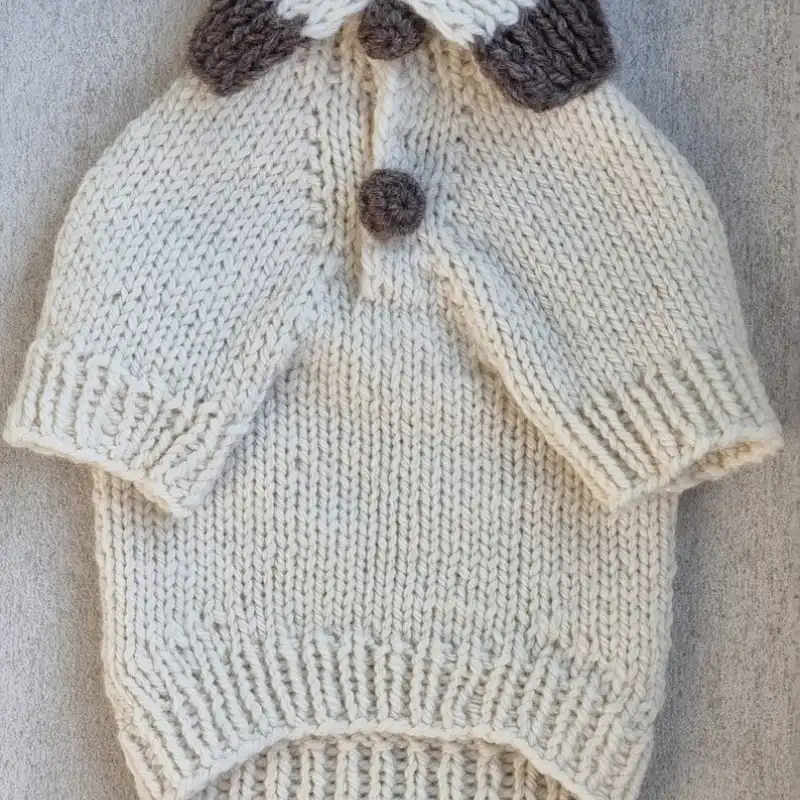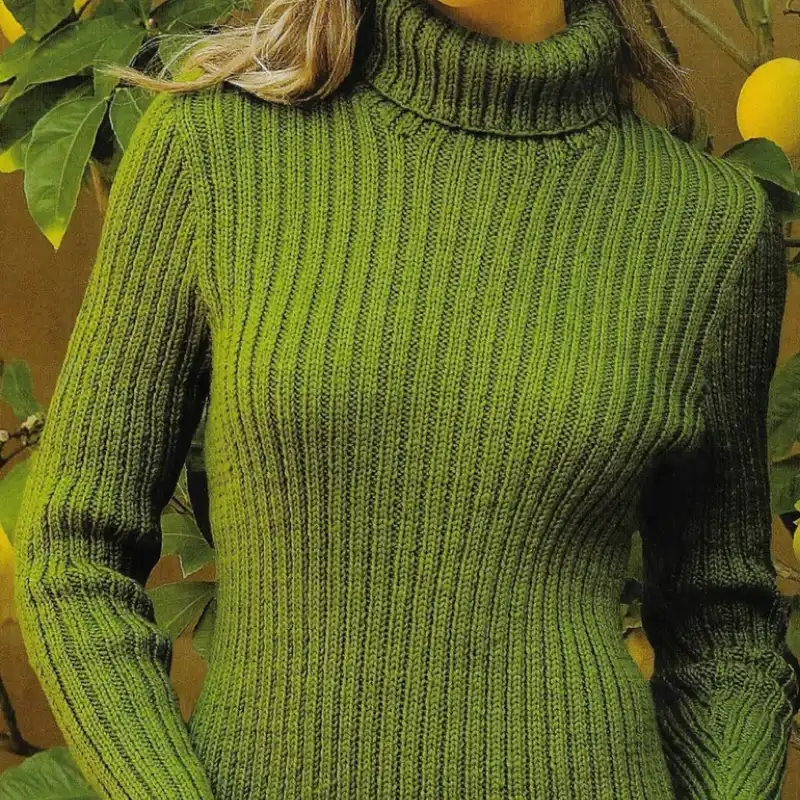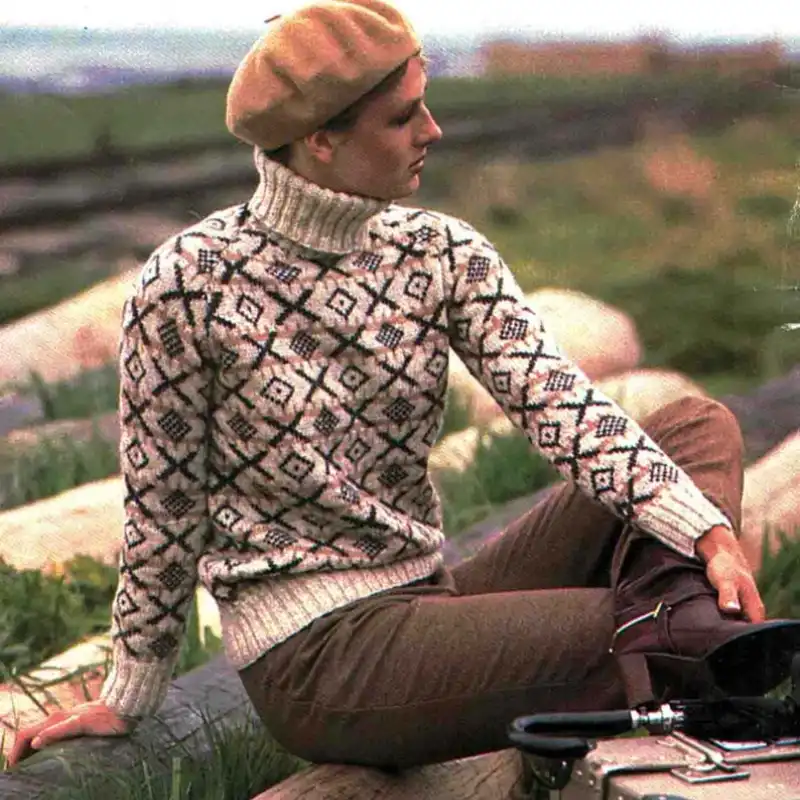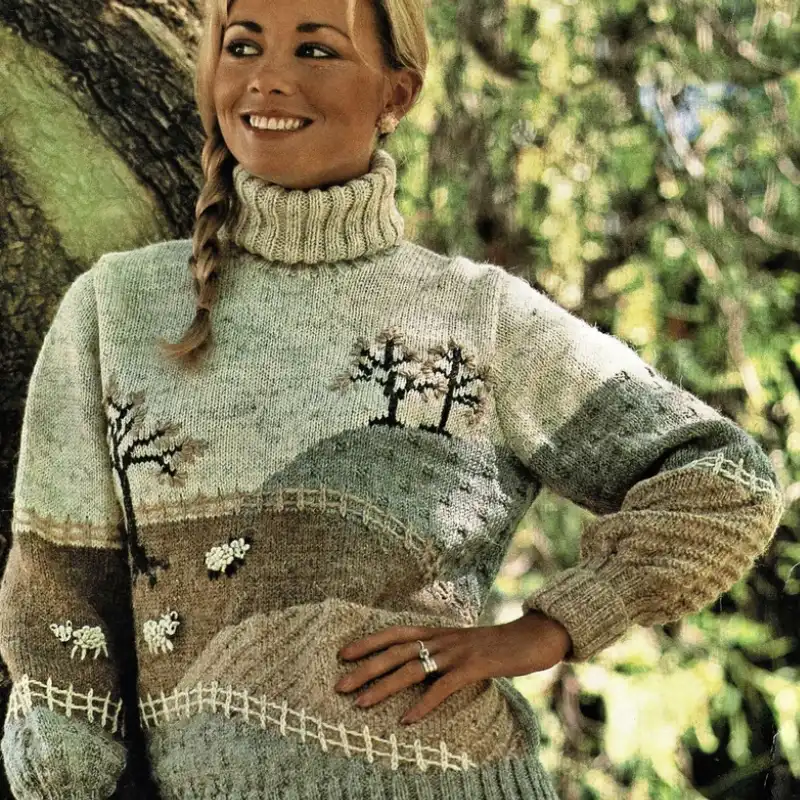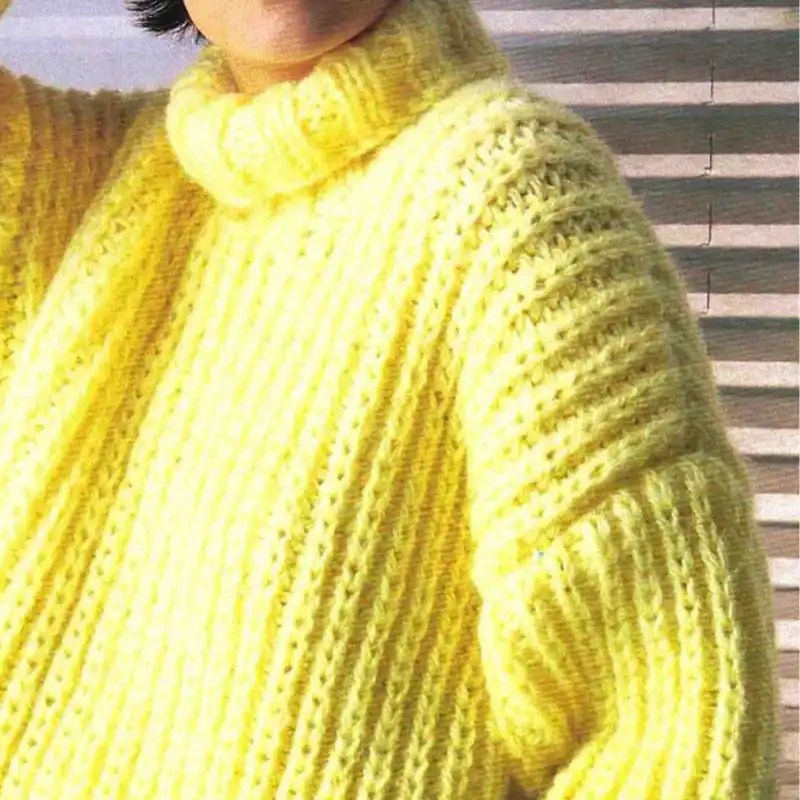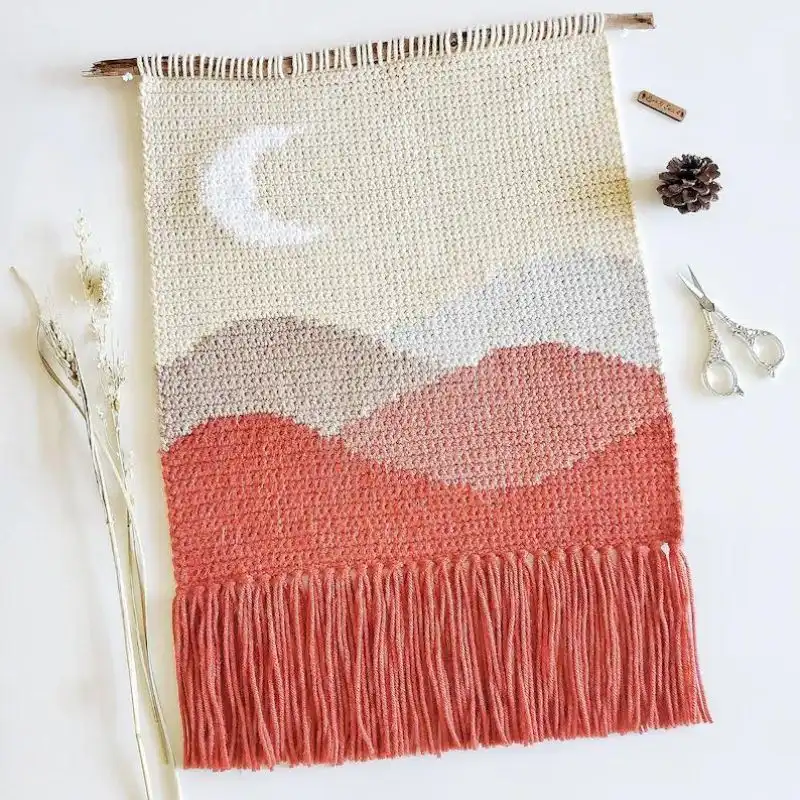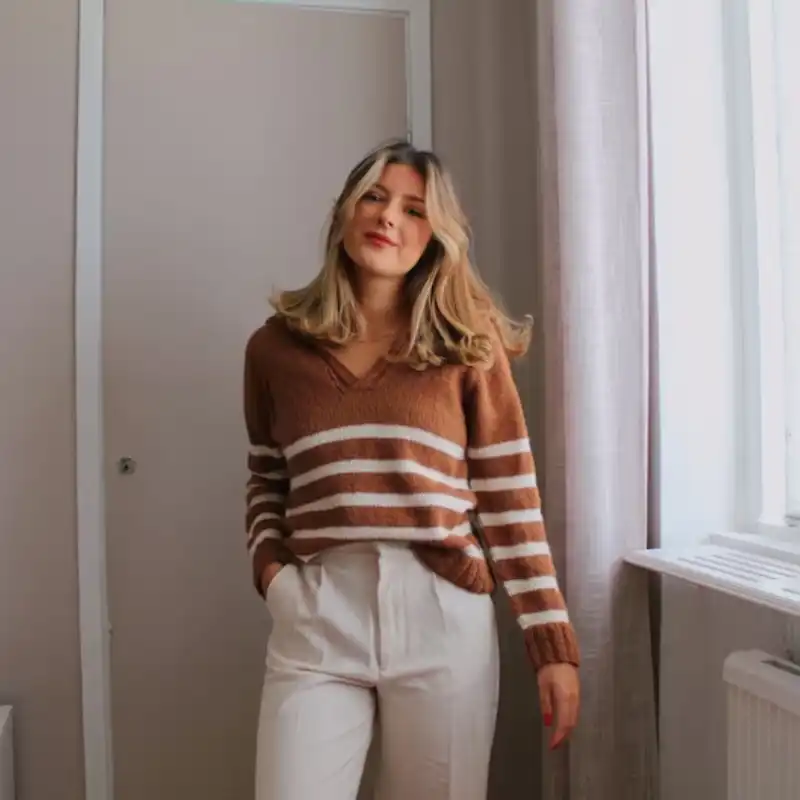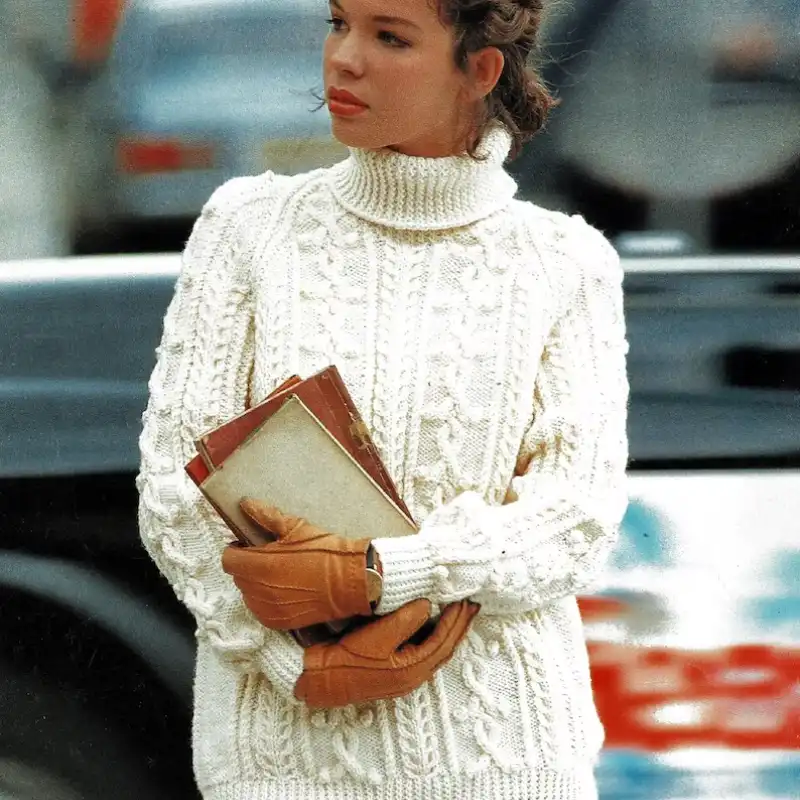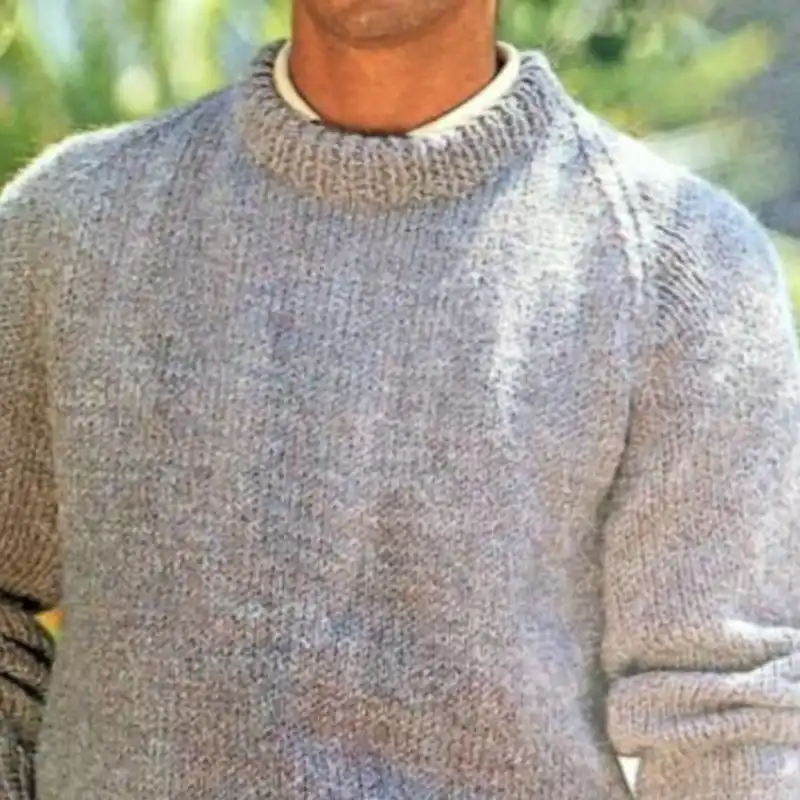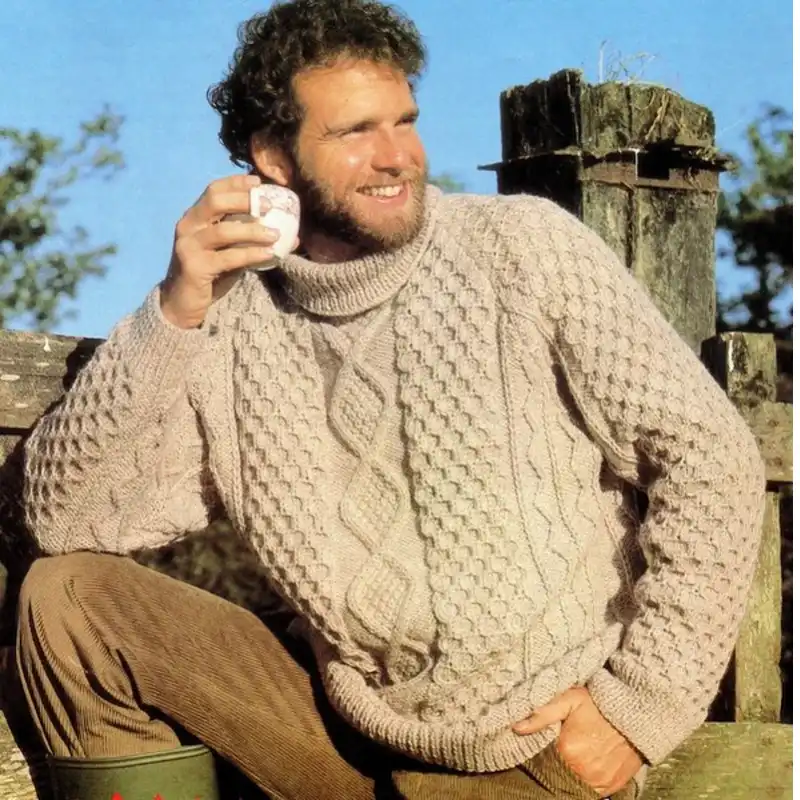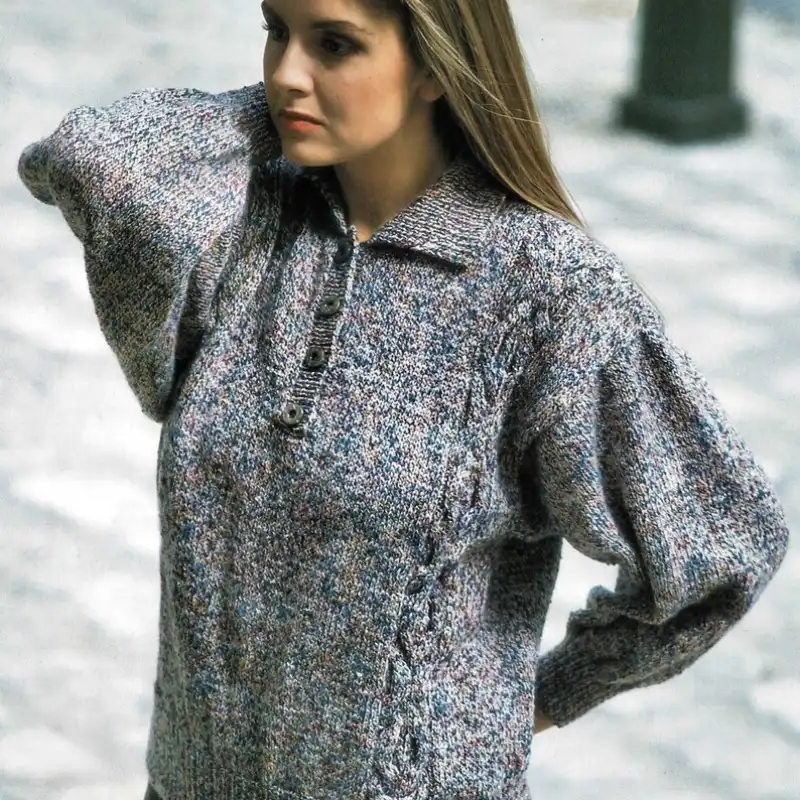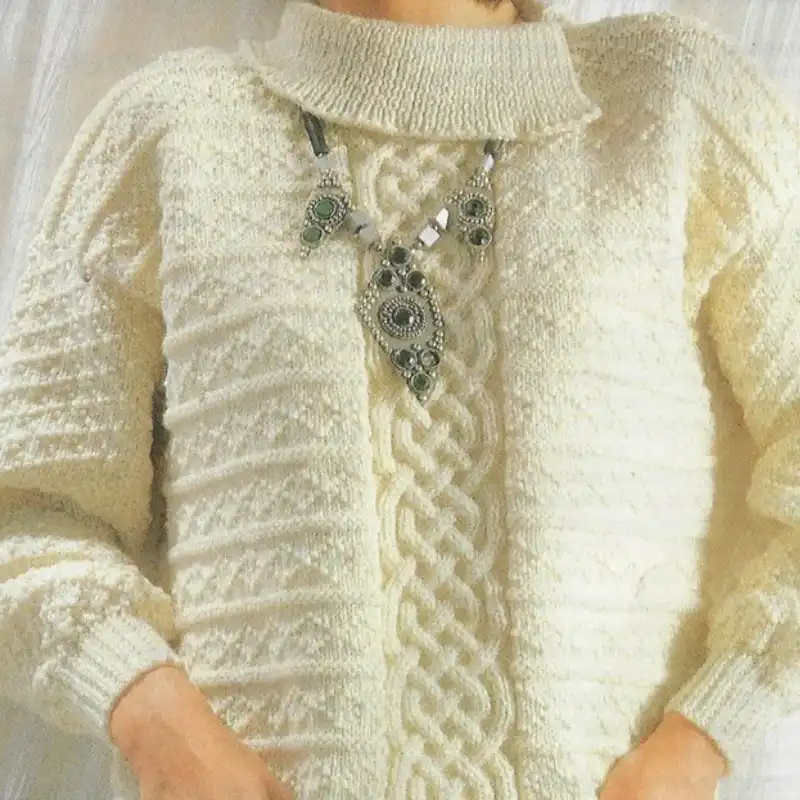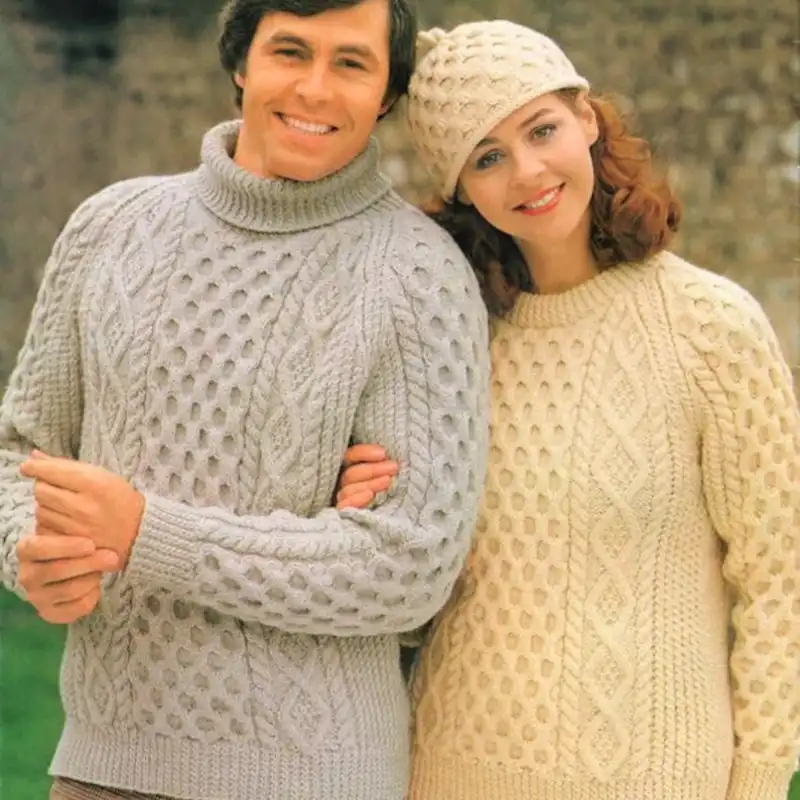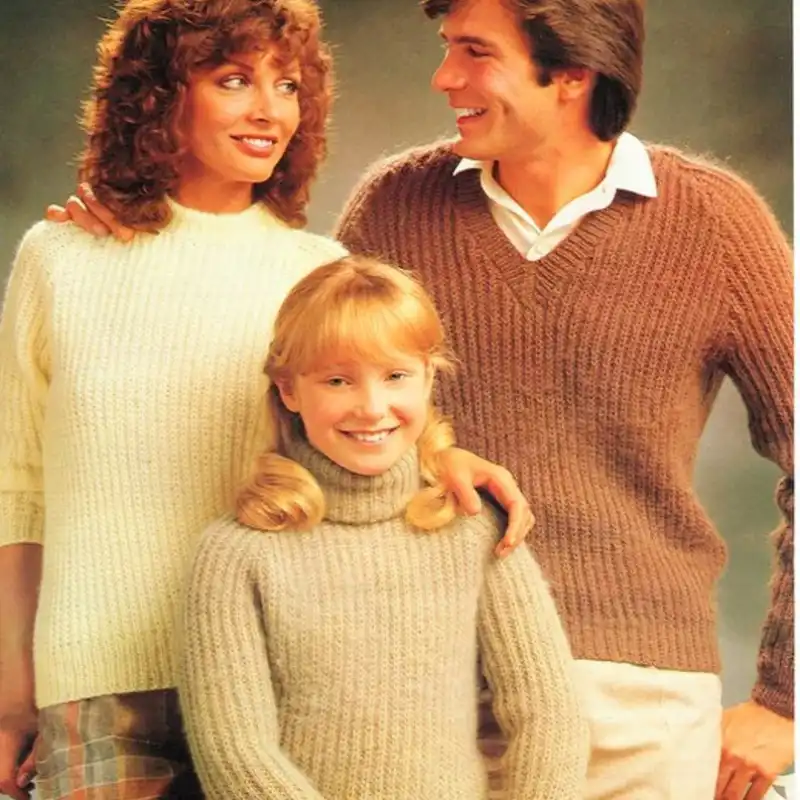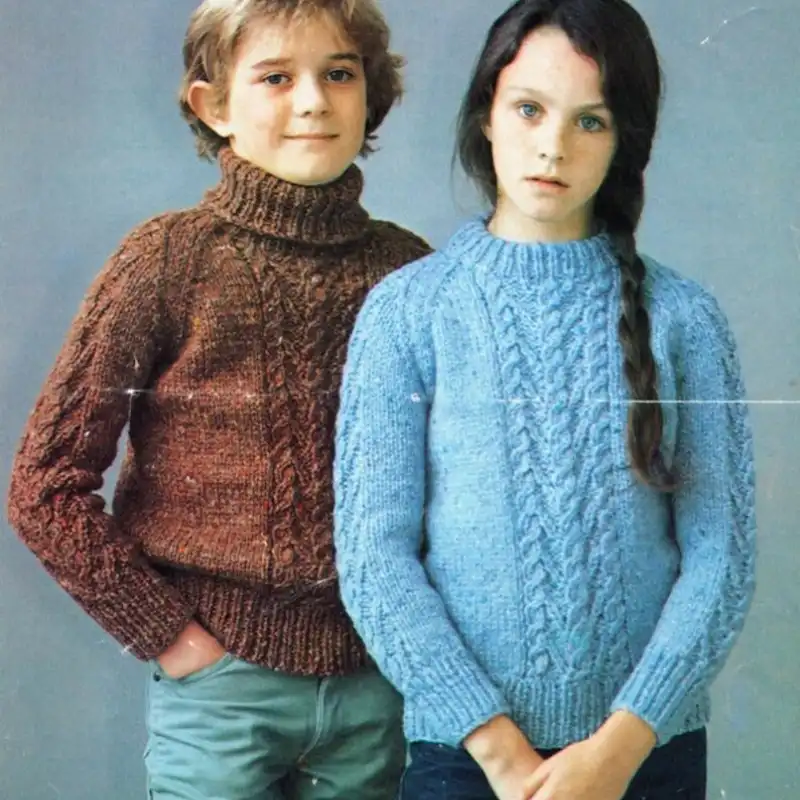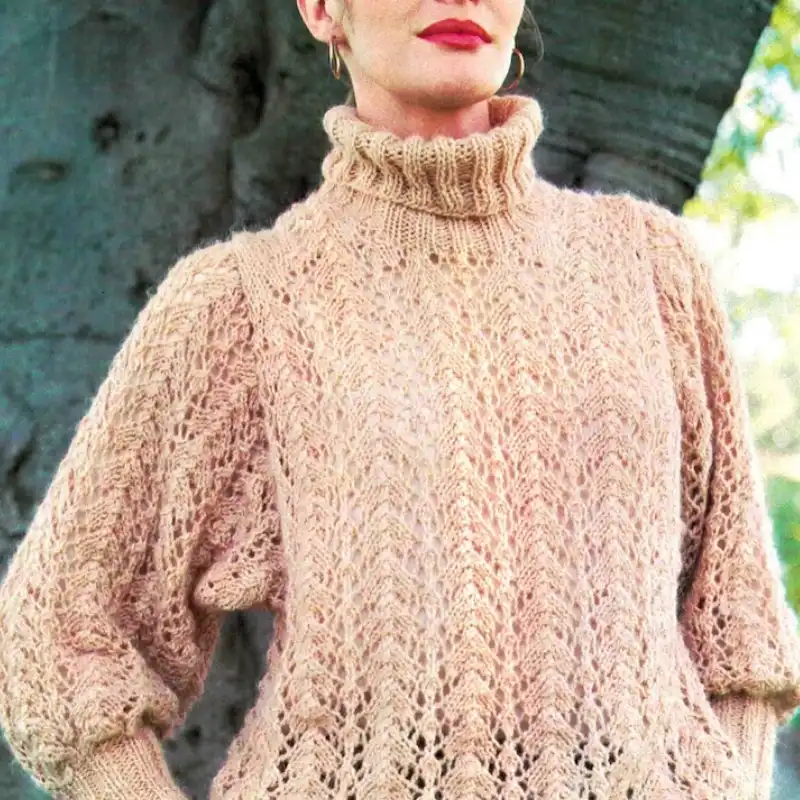If you’re like me, an expert knitter always hunting for the next trendy project, you’ve likely faced the problem of finding that perfect blend of chic and comfort.

The solution? Polo sweaters! And the best way to dive into this fashionable world is by knitting your own. Imagine having 30 Polo Sweater Knitting Patterns at your fingertips, each a great way to add flair to your wardrobe for every occasion.
I’m sharing my top picks of the easiest and most effective patterns in this post. Whether you’re seeking to solve the problem of a drab wardrobe or find unique gifts, these patterns are your best bet.
One of the best aspects of knitting polo sweaters is their versatility and the most significant advantage. You can customize them to your heart’s content.
Knitting a polo sweater is one of the simplest joys, and I’m here to guide you through every stitch. All you need are your needles, some yarn, and a dash of creativity. Get ready to transform your knitting game with these patterns – you’ll never look at a polo sweater the same way again!
Benefits Of Knitting Sweater
Knitting polo sweaters is a craft and an enriching experience with many benefits. Here are some of the key advantages:
- Personalization And Creativity: Knitting your polo sweater allows you to choose every detail, from color and pattern to fit and style. This level of customization ensures your creation is unique and perfectly tailored to your taste.
- Therapeutic Qualities: The rhythmic, repetitive motion of knitting is known for its calming effects. It can reduce stress and anxiety, acting as a form of meditation that promotes mental well-being.
- Skill Development: Knitting is a skill that improves with practice. Creating polo sweaters enhances your knitting techniques, enabling you to tackle more complex patterns and stitches.
- Eco-Friendly Fashion: You contribute to sustainable fashion practices by knitting your own clothing. Creating eco-friendly garments using natural, organic yarns is an excellent way.
- Sense of Achievement: Completing a knitting project like a polo sweater provides a sense of accomplishment. It boosts self-esteem and provides a tangible reward for your efforts.
- Versatility In Design: Polo sweaters are versatile in style, making them suitable for various occasions. Whether casual or semi-formal, a hand-knitted polo can fit the bill.
- Gift-Giving Satisfaction: Hand-knitted items make thoughtful, personalized gifts. A polo sweater crafted by you can be a special present for loved ones, reflecting your time, effort, and affection.
- Cost-Effective Wardrobe Update: Knitting allows you to update your wardrobe without the high cost of buying designer or boutique clothing. It’s a cost-effective way to stay fashionable.
- Community and Connection: The knitting community is vast and welcoming. Working on projects like polo sweaters can connect you with fellow knitters, providing social interaction and support.
- Longevity And Quality: Hand-knitted garments can outlast mass-produced items when made with quality materials. It ensures you have a durable, high-quality piece in your wardrobe.
Various Stitches To Knit A Polo Sweater
Knitting a polo sweater involves a variety of basic stitches. Here’s a list of some fundamental stitches you’ll likely use, each with a brief explanation:
- Knit Stitch (K): The most basic and commonly used stitch in knitting. It creates a smooth, ‘V’ shaped pattern on the right side of the fabric. To make a knit stitch, insert the right needle from front to back into the first stitch on the left needle, wrap the yarn around the correct needle, and pull it through to create a new stitch.
- Purl Stitch (P): The opposite of the knit stitch, producing a bumpy texture called ‘purl bumps.’ For a purl stitch, insert the right needle from back to front into the stitch, wrap the yarn around it, and pull it through. Purl stitches are often alternated with knit stitches to create various patterns.
- Rib Stitch: A combination of knit and purl stitches often used for cuffs and collars on sweaters for elasticity. To create ribbing, alternate between knit and purl stitches within the same row and repeat the pattern for subsequent rows.
- Stockinette Stitch: This is made by knitting all stitches in one row and purling all stitches in the next. This stitch creates a smooth, classic texture on the right side, with a bumpy texture on the wrong side, commonly used for the main body of sweaters.
- Garter Stitch: Created by knitting every row (or purling every row). It produces a stretchy and ridged fabric that lies flat, ideal for sections of the sweater that require structure.
- Moss Stitch (or Seed stitch): Alternates between knit and purl stitches in each row but offset in the following row. This stitch provides a textured, dense fabric suitable for adding decorative elements to your sweater.
- Cable Stitch: Involves rearranging stitches to create twists and turns in your knitting, producing a cable pattern. It is more advanced than the basic stitches and is used for decorative elements in a sweater.
- Increase and Decrease Stitches: Techniques to add or reduce stitches, respectively. These are essential for shaping the sweater, such as armholes, neckline, and waist.
RELATED: 25 Free Pants Knitting Patterns For Warmth And Style
How Long Should A Polo Sweater Be?
When knitting a polo sweater, the length of the garment is an important consideration. It can vary depending on factors such as the intended fit (slim, regular, oversized), the wearer’s body measurements, and personal style preferences. Here’s a general guide to polo sweater lengths based on various sizes:
- Children’s Sizes: For children, polo sweaters typically range from about 16 inches (40 cm) in length for toddlers to around 20-24 inches (50-60 cm) for older kids. These measurements can vary depending on the child’s age and height.
- Petite Sizes: A standard polo sweater length for petite adults might be around 22-24 inches (55-60 cm). This site is designed for shorter individuals, ensuring the sweater appears manageable and oversized.
- Standard Women’s Sizes: Women’s polo sweaters often range from about 24 inches (60 cm) for a shorter style to around 28 inches (70 cm) for a longer style. This range accommodates different preferences for fit, whether one prefers a sweater that hits just below the waist or one that covers the hips.
- Standard Men’s Sizes: Men’s polo sweaters usually have a length ranging from 25 inches (63 cm) for smaller sizes to 30 inches (76 cm) or more for larger sizes. The length is typically enough to cover the belt line comfortably without being too long.
- Plus Sizes: For plus-size individuals, the length of a polo sweater might range from 26 inches (66 cm) to 32 inches (81 cm) or more. The key is to balance the length with the overall fit to ensure comfort and style.
- Custom Fit: The length should be determined based on the wearer’s specific body measurements for a custom-fitted polo sweater. It involves measuring the distance from the shoulder or neck to where the sweater should end, typically around the hip or slightly below.
- Fashion Preferences: The desired look can also influence the length. Some may prefer a cropped style, which is shorter, or an oversized, tunic-like style, which is longer.
Essential Tools And Materials
Knitting a polo sweater requires a collection of essential tools and materials. Having the right items at hand can make the knitting process smoother and more enjoyable. Here’s a list of what you’ll need:
Abbreviations For Knitting Polo Sweaters
When knitting polo sweaters, you’ll encounter various standard abbreviations in patterns. These abbreviations are a shorthand way of conveying instructions without lengthy descriptions. Here’s a list of standard knitting abbreviations that you might come across in polo sweater patterns:
- CO: Cast On – Creating the initial stitches on the needle.
- BO: Bind Off (or Cast Off) – The method to close stitches so they don’t unravel.
- K: Knit – The basic knit stitch.
- P: Purl – The basic purl stitch.
- St(s): Stitch(es) – The fundamental knitting units.
- RS: Right Side – The front or outer side of the work.
- WS: Wrong Side – The back or inside of the work.
- K2tog: Knit Two Together – A decrease method where two stitches are knitted together.
- P2tog: Purl Two Together – Similar to K2tog but with purl stitches.
- YO: Yarn Over – An increase method that creates a hole, making a lace effect.
- SSK: Slip, Slip, Knit – Decreasing stitches, creating a left-leaning decrease.
- SL: Slip Stitch – Transferring a stitch from one needle to another without knitting it.
- M1: Make One – An increase method for creating a new stitch.
- PM: Place Marker – Putting a stitch marker on the needle to mark a specific place.
- SM: Slip Marker – Moving the marker from one needle to another.
- RM: Remove the marker. Take the marker off the needle.
- Rep: Repeat – Repeat a sequence of instructions.
- Rnd(s): Round(s) – Used in circular knitting.
- Inc: Increase – Adding a stitch/stitches to the work.
- Dec: Decrease – Reducing the number of stitches.
- [ ] or ( ): Instructions within brackets or parentheses are repeated as directed.
- Tbl: Through Back Loop – Knitting or purling a stitch through its back loop.
- Garter St: Garter Stitch – A pattern created by knitting every row.
- Stockinette St: Stockinette Stitch – A fabric made by alternating rows of knit and purl stitches.
Which Yarn Is Best For Knitting A Polo Sweater?
As an avid knitter, I’ve experimented with various yarns for different projects, and when it comes to knitting polo sweaters, the choice of yarn can significantly impact the final product. Here are my thoughts on some of the best yarns for knitting polo sweaters:
- Merino Wool: Merino is one of my top choices for polo sweaters. It’s incredibly soft, making it comfortable against the skin, and has excellent temperature-regulating properties. Merino wool is also durable and has a natural elasticity, which is great for a snug yet comfortable fit.
- Cotton: I often recommend cotton for warmer climates or those who prefer non-wool yarns. It’s breathable, soft, and hypoallergenic. However, cotton lacks the elasticity of wool, so it’s essential to keep that in mind for fit and shape retention.
- Cashmere: Cashmere is unparalleled for a luxurious touch. It’s exceptionally soft, warm, and has a subtle sheen. A cashmere polo sweater is perfect for a special occasion or when you want a touch of luxury. However, it can be on the pricier side.
- Alpaca: Alpaca yarn is another favorite, known for its warmth, softness, and hypoallergenic qualities. It’s warmer than wool and has a lovely drape, which works well for a more relaxed-fit sweater.
- Acrylic Blends: If you’re looking for a more budget-friendly option, acrylic or acrylic blends are a good choice. Modern acrylic yarns can be surprisingly soft and easy to care for, making them a practical option for everyday wear.
- Wool Blends: Blends that combine wool with other fibers like silk, bamboo, or synthetic fibers can offer the best of both worlds – the warmth and elasticity of wool, along with the added benefits of other fibers like increased softness or durability.
- Bamboo: Bamboo yarn is a fantastic eco-friendly choice. It’s soft, with a beautiful sheen, and is naturally antibacterial. Bamboo yarn is also breathable and relaxed, making it a good option for transitional seasons.
RELATED: The 18 Best Online Knitting Classes Of 2023 To Knit Like A Pro
How Much Yarn Do I Need To Knit A Polo Sweater?
As a knitter, one of the most frequent questions I encounter is about the amount of yarn needed for a project like a polo sweater.
It can vary widely based on several factors: the size of the sweater, the yarn weight, the knitting gauge, and the complexity of the pattern. Generally, for an average adult-size polo sweater in a medium-weight yarn (like worsted or DK), you might need approximately 1000-1500 yards.
You’ll need less, perhaps around 800-1000 yards, for smaller sizes or lighter yarns. Conversely, you might need upwards of 1500-2000 yards for larger sizes or heavier yarns.
It’s always a good idea to check the yarn requirements specified in your pattern, as different designs and fits can significantly alter the amount needed.
I also recommend buying a little extra yarn to account for any variations in gauge or modifications you might make. Better safe than running out of yarn mid-project!

Understand Knitting Stitches & Techniques
Understanding knitting stitches and techniques requires practice and patience. Start by familiarizing yourself with basic stitches like the knit and purl. Practice these until you’re comfortable, then gradually try more complex techniques like increases, decreases, and yarnovers.
Reading patterns are essential; they use standard abbreviations for stitches and techniques. Watching tutorials can be incredibly helpful for visual learners.
Pay attention to how the yarn moves and stitches form as you knit. This hands-on experience builds your understanding and intuition. Remember, every knitter was a beginner once, and mistakes are just part of the learning process!
Is It Beginner Friendly?
As someone who’s been knitting for years, I’d say knitting a polo sweater can be challenging for beginners. It involves several techniques like ribbing, shaping for the neckline, and potentially sleeves, which might be daunting if you’re just starting.
However, a polo sweater could be a great project if you’re a beginner with a few projects, like scarves or simple hats, and you’re keen to learn and expand your skills. It’s all about taking it step by step, being patient with yourself, and not being afraid to unravel and retry if needed.
How many stitches are required to cast on for a knitted polo sweater?
Casting on stitches for a polo sweater is the foundational step of your knitting project. The number of stitches to cast depends on several factors, including the size of the sweater, the yarn weight, and your gauge (the number of stitches per inch/cm you knit). Here’s a general approach:
- Gauge Swatch: Before you begin, knit a gauge swatch. It is a small sample square using the needles and yarn you’ll use for your sweater. Measure how many stitches per inch or centimeter you get. It will help you calculate the total number of stitches needed.
- Measurements And Calculation: Determine the width needed for your sweater based on the pattern. For instance, if you’re making a medium-sized men’s sweater with a chest width of 20 inches (50 cm) and your gauge is 5 stitches per inch (2 stitches per cm), you’ll multiply the width by the stitch count of your gauge: 20 inches x 5 stitches/inch = 100 stitches.
- Casting On: Use a method suitable for your sweater’s ribbing and elasticity. The long-tail cast-on is a popular choice for its neatness and elasticity. Make a slip knot, place it on your needle, and then use the long-tail method to cast on the calculated number of stitches.
- Pattern Instructions: Always refer to your specific pattern for the exact number of stitches to cast on, as it may include additional instructions for ribbing or borders.
How To Knit A Beginner-Friendly Polo Sweater?
Knitting a beginner-friendly polo sweater is a rewarding project to help you build and refine your knitting skills. This guide is tailored for beginners who have a basic understanding of knitting and purling.
Skill Level
Beginner to Early Intermediate
Materials
Step-by-Step Instructions
- Gauge Swatch: Knit a gauge swatch to ensure your stitch size matches the pattern. Adjust needle size if necessary.
- Casting On: To begin your project, use a primary cast-on method, like the long-tail cast-on. The pattern will specify the number of stitches to cast based on your size.
- Knit the Ribbing: Most sweaters start with ribbing at the bottom. Knit in the rib stitch (alternating knit and purl stitches) as per your pattern, usually for 1-2 inches.
- Body of the Sweater: After the ribbing, continue with the main stitch pattern (often stockinette stitch: knit on the right side, purl on the wrong side) for the body of the sweater. Work until you reach the armhole length specified in your pattern.
- Dividing for Sleeves and Body: Follow your pattern to divide the stitches for sleeves and body. You may need to place marker threads or use stitch holders.
- Knitting the Front and Back: Knit the front and back pieces separately, following the pattern for decreases or increases for shaping the armholes and neckline.
- Knitting the Sleeves: Sleeves are often knitted separately and sewn to the body. Depending on the pattern, they can be knitted in the round or flat.
- Joining the Pieces: Sew the pieces together once they are knitted. It usually involves stitching the shoulder seams first, then setting in the sleeves, and finally sewing the side and sleeve seams.
- Knitting the Collar: Pick up stitches around the neckline to knit the collar in the rib stitch. It can be done on circular needles.
- Finishing Touches: Weave in any loose ends. Block your sweater if needed to give it a professional finish.
Tips
- Read Through the Pattern: Before starting, read through the entire pattern to understand the process.
- Stitch Markers: Use them to mark essential sections or changes in the pattern.
- Take Your Time: Don’t rush. Enjoy the process and take breaks when needed.
- Asking for Help: Ask for help from more experienced knitters or online knitting communities if you get stuck.
30 Different Patterns For Knitting Polo Sweaters
1. Winona Polo Heavyweight Edition Pattern
Elevate your winter wardrobe with the Winona Polo Heavyweight Edition Pattern. This knitting pattern is designed for coziness and style, offering a heavyweight version of the classic polo sweater. With its textured details and flattering fit, Winona is perfect for those seeking warmth without compromising fashion.
2. Striped Polo Sweater
Embrace a sporty-chic vibe with the Striped Polo Sweater knitting pattern. This design features clean lines and bold stripes, creating a timeless and versatile garment. Knit to a classic piece that transitions from casual outings to relaxed weekends.
3. Vintage Sweater With Polo Neckline
Transport your style to the past with the Vintage Sweater with Polo Neckline. This pattern captures the essence of retro fashion, combining a classic polo neckline with timeless charm. Knit your way to a vintage-inspired sweater that stands the test of time.
4. Ladies, Lovely Polo Sweater
Indulge in elegance with the Ladies Lovely Polo Sweater. This knitting pattern celebrates sophistication, featuring a flattering fit and feminine charm. Knit your way to a wardrobe staple that effortlessly combines comfort and style.
5. Ladies’ Smart Polo Sweater
Make a smart and stylish statement with the Ladies Smart Polo Sweater. This pattern combines the tailored look of a polo neckline with a modern silhouette, creating a sweater that exudes professionalism and fashion-forward sophistication.
6. Family Plain Polo Necked Jumpers
Create a cohesive and stylish family wardrobe with the Family Plain Polo Necked Jumpers knitting pattern. This versatile pattern provides options for all family members, offering classic polo-necked jumpers that are perfect for matching or individualized styles.
7. Basic Polo Sweater Pattern
Build your wardrobe foundation with the Basic Polo Sweater Pattern. This essential knitting pattern provides a simple and timeless design, making it a go-to choice for casual elegance. Knit your way to a classic piece that pairs effortlessly with any outfit.
8. Women’s Double Rib Polo Neck Sweater
Experience texture luxury with the Women’s Double Rib Polo Neck Sweater. This pattern features a unique double rib design that adds depth and visual interest to the classic polo neckline. Knit your way to a cozy and stylish garment that stands out.
9. Lady’s Fair Isle Sweater Jumper
Embrace traditional craftsmanship with the Lady’s Fair Isle Sweater Jumper. This pattern showcases the artistry of Fair Isle knitting, combining intricate patterns with the timeless appeal of a polo sweater. Knit your way to a masterpiece that reflects both skill and style.
10. Ladies, Fabulous Picture Sweater
Make a fashion statement with the Ladies Fabulous Picture Sweater. This pattern allows you to express your creativity with a customizable picture or design on the sweater. Knit your way to a one-of-a-kind garment that showcases your unique style.
11. Polo Neck Ribbed Sweater
Dive into the world of texture with the Polo Neck Ribbed Sweater. This pattern features ribbed details that add a touch of sophistication to the classic polo neckline. Knit your way to a garment that combines comfort with understated elegance.
12. Ladies Long Polo Neck Tunic Sweater
Embrace versatility with the Ladies’ Long Polo Neck Tunic Sweater. This pattern offers a longer silhouette, perfect for pairing with leggings or skinny jeans. Knit your way to a trendy, comfortable tunic that effortlessly elevates your casual wardrobe.
13. Men’s Polo Neck Sweater
Elevate men’s fashion with the Mens Polo Neck Sweater. This classic knitting pattern provides a tailored fit and a polished look, making it a wardrobe essential for the modern man. Knit your way to timeless style and comfort.
14. Women’s Chunky Polo Sweater
Stay cozy and on-trend with the Women’s Chunky Polo Sweater. This pattern features chunky yarn for extra warmth and a relaxed, comfortable fit. Knit your way to a chunky, stylish sweater perfect for chilly days.
15. Stripe Me Right Polo Sweater
Play with stripes and patterns in the Stripe Me Right Polo Sweater. This knitting pattern combines the classic polo neckline with a playful stripe design, creating an eye-catching and chic garment. Knit your way to a statement piece that stands out with its bold style.
16. Loose Fitting Polo Neck Tunic Sweater
Embrace casual elegance with the Loose Fitting Polo Neck Tunic Sweater. This knitting pattern offers a relaxed and comfortable fit, combining the laid-back charm of a tunic with the classic appeal of a polo neckline. Knit your way to a versatile, stylish garment that transitions from cozy nights to casual outings.
17. Crew & Polo Neck Fisherman Rib Sweater
Blend classic and contemporary with the Crew & Polo Neck Fisherman’s Rib Sweater. This pattern features the timeless appeal of the fisherman’s rib combined with the modern twist of crew and polo neck options. Knit your way to a textured masterpiece that brings together tradition and trend.
18. Safari Polo
Embark on a style adventure with the Safari Polo knitting pattern. This design captures the spirit of adventure with a polo neckline and safari-inspired details. Knit your way to a garment that exudes comfort and a sense of exploration.
19. Ladies Classic Aran Polo Collar Sweater
Experience the enduring charm of Aran knitting with the Ladies Classic Aran Polo Collar Sweater. This pattern showcases intricate cable patterns and a classic polo collar, creating a timeless and elegant garment. Knit your way to a piece that seamlessly blends tradition with sophistication.
20. Cross Stitched Sweater
Add a touch of artistry to your wardrobe with the Cross Stitched Sweater. This knitting pattern features cross-stitch detailing on a polo neckline, creating a unique and eye-catching design. Knit your way to a sweater that is as creative as comfortable.
21. Round Neck Rib Textured Sweater
Embrace texture and simplicity with the Round Neck Rib Textured Sweater. This pattern combines a round neckline with a ribbed texture, resulting in a classic and versatile garment. Knit your way to a wardrobe staple that effortlessly complements any style.
22. Striped Skinny Rib Polo Neck Sweater
Play with stripes and texture in the Striped Skinny Rib Polo Neck Sweater. This pattern features a skinny rib design and bold stripes on the polo neckline, creating a modern and chic garment. Knit your way to a statement piece that stands out with its contemporary flair.
23. Classic Mans Aran Polo Neck
Elevate men’s fashion with the Classic Man’s Aran Polo Neck. This knitting pattern combines the richness of Aran patterns with the sophistication of a polo neck. Knit your way to a timeless, distinguished sweater that exudes warmth and style.
24. Vintage Polo Shirt Style Sweater
Take a trip down memory lane with the Vintage Polo Shirt Style Sweater. This pattern captures the essence of classic polo shirts, combining it with the comfort of a knitted sweater. Knit your way to a piece that adds a touch of retro charm to your modern wardrobe.
25. Cable & Texture Sweater With Pocket
Add functionality and style with the Cable & Texture Sweater With Pocket. This pattern incorporates cable and textured stitches, complemented by a practical pocket detail. Knit your way to a sweater that is both visually appealing and functional.
26. Honeycomb Raglan Polo Sweater
Dive into the intricate beauty of honeycomb stitch with the Honeycomb Raglan Polo Sweater. This pattern features a raglan construction and a polo neckline, creating a sweater that is not only cozy but also visually captivating. Knit your way to a garment that combines comfort with exquisite detail.
27. Double Knit Sweater Jumper
Explore the warmth and thickness of double knitting with the Double Knit Sweater Jumper. This pattern provides a cozy and substantial sweater, perfect for colder days. Knit your way to a garment that prioritizes comfort without compromising on style.
28. Family Fisherman’s Rib Polo Sweater
Foster family warmth with the Family Fisherman’s Rib Polo Sweater. This versatile pattern offers the classic appeal of fisherman’s rib in a polo neck design, creating coordinating sweaters for the entire family. Knit your way to a set of garments that celebrate unity and style.
29. Crew Neck Raglan Cable Sweaters
Combine the simplicity of a crew neck with the elegance of cable stitches in the Crew Neck Raglan Cable Sweaters. This pattern provides a classic and sophisticated look, perfect for casual and dressy occasions. Knit your way to timeless style with this versatile design.
30. Lacy Patterned Lady’s Polo-Neck Sweater
Embrace the delicacy of lace with the Lacy Patterned Lady’s Polo-Neck Sweater. This knitting pattern combines the sophistication of a polo neckline with intricate lace patterns, creating a feminine and elegant sweater. Knit your way to a garment that adds a touch of romance to your wardrobe.
Tips & Tricks To Avoid Knitting Mistakes
Knitting a perfect polo sweater can be a delightful experience, but it also comes with its fair share of challenges, especially in avoiding mistakes. Here are some tips and tricks to help you knit a flawless polo sweater:
How To Block The Knit Polo Sweater?
Blocking is an essential finishing step in knitting, especially for garments like polo sweaters. It helps to even out the stitches, set the final dimensions, and give your sweater a professional look. Here’s a step-by-step guide on how to block a knit polo sweater:
Step-by-Step Instructions for Blocking
- Prepare Your Blocking Area: Set up a flat, clean, water-resistant surface large enough to accommodate your sweater. You can use blocking mats, a clean mattress, or layered towels.
- Wash the Sweater: Gently wash your sweater following the yarn’s care instructions. This step is crucial as it relaxes the fibers. Use a mild detergent and avoid agitating the sweater too much to prevent felting.
- Remove Excess Water: Carefully lift the sweater and gently squeeze out excess water. Avoid wringing or twisting. Then, lay it flat on a clean towel, roll it up, and press to absorb more water.
Lay Out The Sweater
- Place the sweater on your blocking surface.
- Gently shape it to the desired dimensions, referring to your pattern or gauge swatch measurements.
- Be careful not to stretch it too much.
- Pin The sweater (if needed): If it needs to be stretched to reach the correct size or shape, use rust-proof pins to secure it. Pin along the edges, starting from the center and working outwards.
- Shape the Collar and Sleeves: Pay special attention to the collar and sleeves. Ensure they are shaped and positioned correctly. You may need to pin polo collars so they lie flat.
- Let It Dry: Allow the sweater to dry completely. It could take anywhere from several hours to a couple of days, depending on the thickness of the yarn and the humidity.
- Remove Pins and Check Dimensions: Once dry, remove the pins and check the sweater’s dimensions. It should now hold its blocked shape.
- Steam Block (Optional): For some fibers, steam blocking with an iron set to a suitable temperature (never directly touching the sweater) can be effective, especially for tough-to-block areas.
Tips
- Use Cold Water: For wool and most fibers, cold water is best to avoid shrinkage or felting.
- No Harsh Manipulation: Handle the sweater gently when wet, as it’s more prone to stretching or felting.
- Measurements: Keep your pattern’s finished measurements handy for reference.
- Blocking Wires (Optional): Blocking wires can be very helpful for straight edges.
Suggestions To Add Style & Personal Touch
Adding style and personal touches to a polo sweater can transform it from a basic garment into a unique expression of your personality and creativity. Here are some suggestions to infuse style and individuality into your knit polo sweater:
- Color Choices: Select yarn colors that reflect your style. Consider using bold or unusual colors or color-blocking for a modern twist.
- Yarn Texture: Experiment with different yarn textures. For instance, a mix of smooth and bouclé yarn can add an interesting tactile element.
- Stitch Patterns: Introduce different stitch patterns for visual interest. For example, incorporating cable stitches or lace patterns can add sophistication.
- Collar Variations: Customize the collar design. A ribbed stand-up collar, a fold-over turtle neck, or a contrasting color collar can significantly change the sweater’s look.
- Sleeve Styles: Alter the sleeve length or style. Bell sleeves, puff sleeves, or ribbed cuffs can give a distinctive look.
- Hemline Adjustments: Play with the hemline shape. A high-low hem, side slits, or a scalloped edge can add flair.
- Embellishments: Add embellishments like buttons, beads, or embroidery. Even a simple addition, like unique buttons on the collar, can be eye-catching.
- Patchwork Or Appliqué: Add fabric patches or knit appliqués in various shapes or contrasting colors for an artistic touch.
- Personal Motifs: Knit in a personal motif or symbol that has significance to you. It could be anything from a favorite animal to a meaningful icon.
- Texture With Different Techniques: Create texture by using bobbles, popcorn, or twisted stitches.
- Contrasting Edges: Add a contrasting color to the edges of your sweater, like the cuffs, hem, and collar, for a pop of color.
- Intarsia Or Fair Isle Patterns: If you’re up for a challenge, incorporate intarsia or Fair Isle patterns to create intricate designs or colorwork.
- Oversized Or Cropped Fit: Adjust the fit of your sweater. An oversized sweater can offer a relaxed, casual look, while a cropped version can be more stylish and modern.
- Add Pockets: Functional yet stylish, pockets can be a practical addition.
- Layering Elements: Design it to be layer-friendly, considering how it will pair with shirts or turtlenecks underneath.

Wash & Care Instructions
Proper washing and care are essential to maintain the longevity and durability of your knit polo sweater, especially if it’s made with natural fibers like wool or cashmere. Here’s a guide to help you care for your sweater:
Washing Instructions
- Check The Yarn Label: Start by reading the care instructions on the yarn label. It provides valuable information about washing and drying.
- Hand Washing: Hand washing is the safest option for most knit polo sweaters. Use lukewarm water and a mild detergent. Gently swirl the sweater in the water and avoid rubbing or twisting, which can cause felting and stretching.
- Machine Washing (If Applicable): If the yarn label indicates that machine washing is safe, use a gentle cycle and cold water. It’s best to place the sweater in a mesh laundry bag to prevent snagging and stretching.
- Rinsing: Rinse thoroughly in clean, lukewarm water until the water runs clear. Avoid sudden temperature changes, as this can cause shrinking.
Drying
- Press out excess water without wringing.
- Lay the sweater flat on a clean, dry towel, roll it up to absorb moisture, then unroll and reshape it on a dry towel.
- Dry it flat in its natural shape.
- Avoid hanging, as it can stretch the fabric.
Care Instructions
- Pilling: Natural fibers tend to pill with wear. Use a fabric comb or a pill remover to remove them gently.
- Storage: Store the sweater folded to prevent stretching. Avoid hanging.
- Moth Prevention: Use cedar blocks or lavender sachets in your wardrobe for wool sweaters to deter moths.
- Refreshing: If the sweater isn’t dirty but needs refreshing, air it on a breezy day, avoiding direct sunlight.
- Ironing: If needed, use a low heat setting on your iron and preferably iron on the reverse side of the sweater. It’s often safer to use a steamer for removing wrinkles.
- Repairs: Fix any small holes or loose threads promptly to prevent them from getting more significant.
- Seasonal Rotation: Clean your sweater before storing it at the end of the season.
RELATED: 68 Free Chunky Cropped Sweater Knitting Patterns For The Fashionable Knitters
A Quick Recap
Dive into the world of knitting polo sweaters with an array of patterns that cater to all skill levels. Each pattern offers a unique blend of style and comfort, from the classic ribbed edges to the elegant cable knits. Whether you prefer a sleek, fitted look or a cozy, oversized feel, there’s a design for everyone.
Embrace the joy of crafting your polo sweater and add a personal touch to your wardrobe. So, grab your needles and yarn, and let’s start knitting! You’re just a few stitches away from creating something exceptional with these patterns. Ready to knit your masterpiece?
Frequently Asked Questions
What Stitch Patterns Are Commonly Used In Polo Sweaters?
Polo sweaters often feature ribbing, stockinette, and sometimes cable stitches, providing style and functional elasticity, especially around cuffs and collars.
Are There Any Specific Techniques To Learn For Knitting Polo Sweaters?
Essential techniques include:
- Ribbing for collars and cuffs.
- Shaping for the neckline and shoulders, and often.
- Picking up stitches for the collar.
How Do I Choose The Right Size To Knit?
Measure yourself and compare it to the sizing guide in the pattern, keeping in mind the desired fit, whether snug or loose.
Can I Machine Wash A Hand-Knit Polo Sweater?
It depends on the yarn used. Check the yarn’s care label, but hand washing is generally recommended to maintain shape and texture.
What’s The Best Way To Fix Mistakes While Knitting A Polo Sweater?
Learning how to un-knit stitches (also known as ‘tinking’) or using a lifeline to unravel back to a mistake can be very effective for corrections.
Do I Need Special Needles To Knit A Polo Sweater?
You’ll need needles matching your yarn weight; circular needles are commonly used for the body, and double-pointed needles for the sleeves.
How Long Does It Take To Knit A Polo Sweater?
The time can vary widely, but on average, it might take a beginner around 20-30 hours to complete a polo sweater.
- 30 Polo Sweater Knitting Patterns To Keep You Stylish On Every Occasion - January 1, 2024
- 21 Baby Blanket Knitting Kits To Wrap Bundle Of Joy With Love - January 1, 2024
- 15 Cashmere Knitting Kits For Fashionable Knits To Embrace Comfort And Style - January 1, 2024







